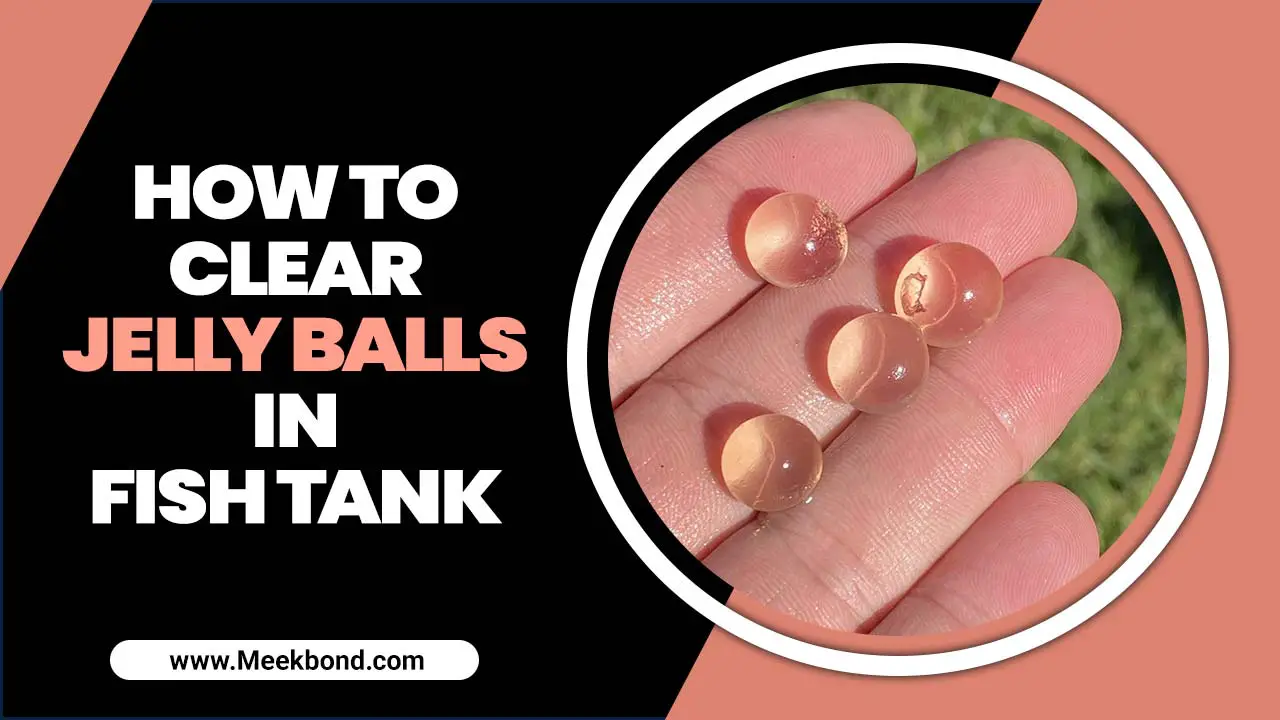Glow Betta Fish, known as Siamese fighting fish, is popular with aquarium enthusiasts. These vibrant and colorful fish are native to the shallow waters of Southeast Asia and are popular for their striking appearance and unique behaviors.
Glow Betta Fish have long, flowing fins in various colors, including red, blue, yellow, and glow-in-the-dark varieties. They are often aching as pets due to their beauty and relatively low maintenance needs. Here we will explore how to do glow in the dark Betta Fish. So if you’re considering adding one of these stunning fish to your aquarium, keep reading to learn everything you need to know.
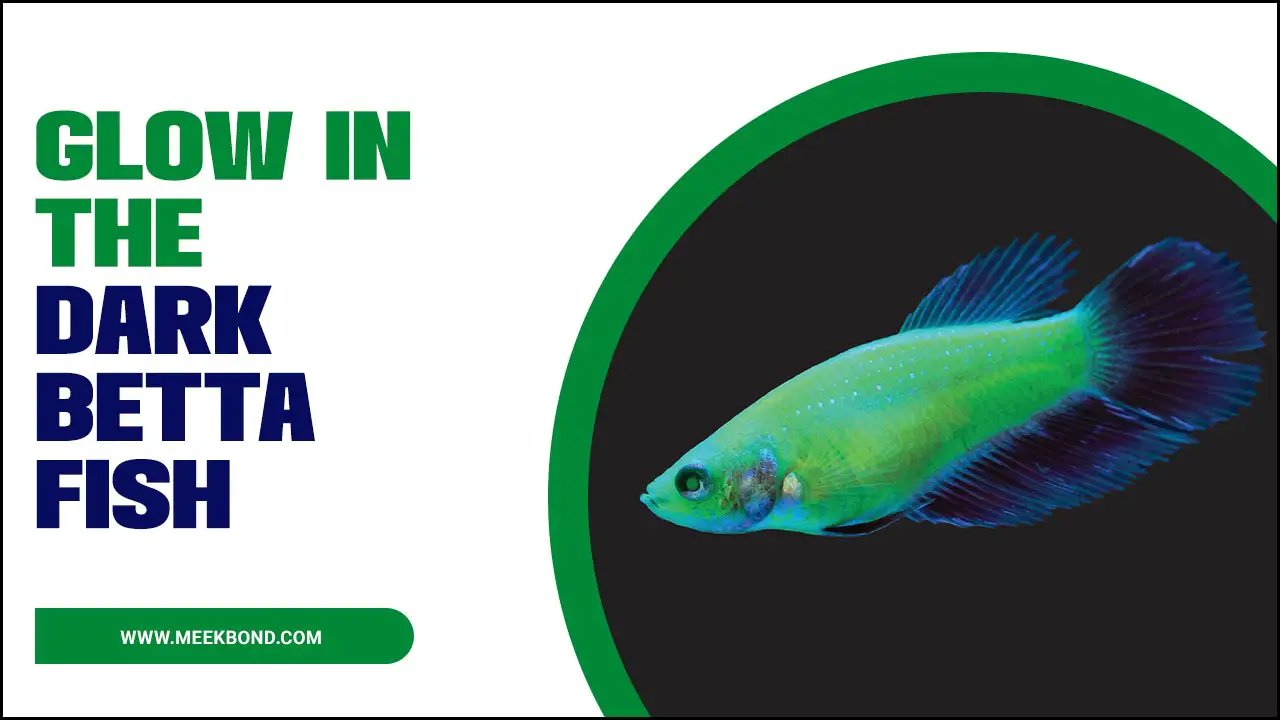
How To Do Glow In The Dark Betta Fish
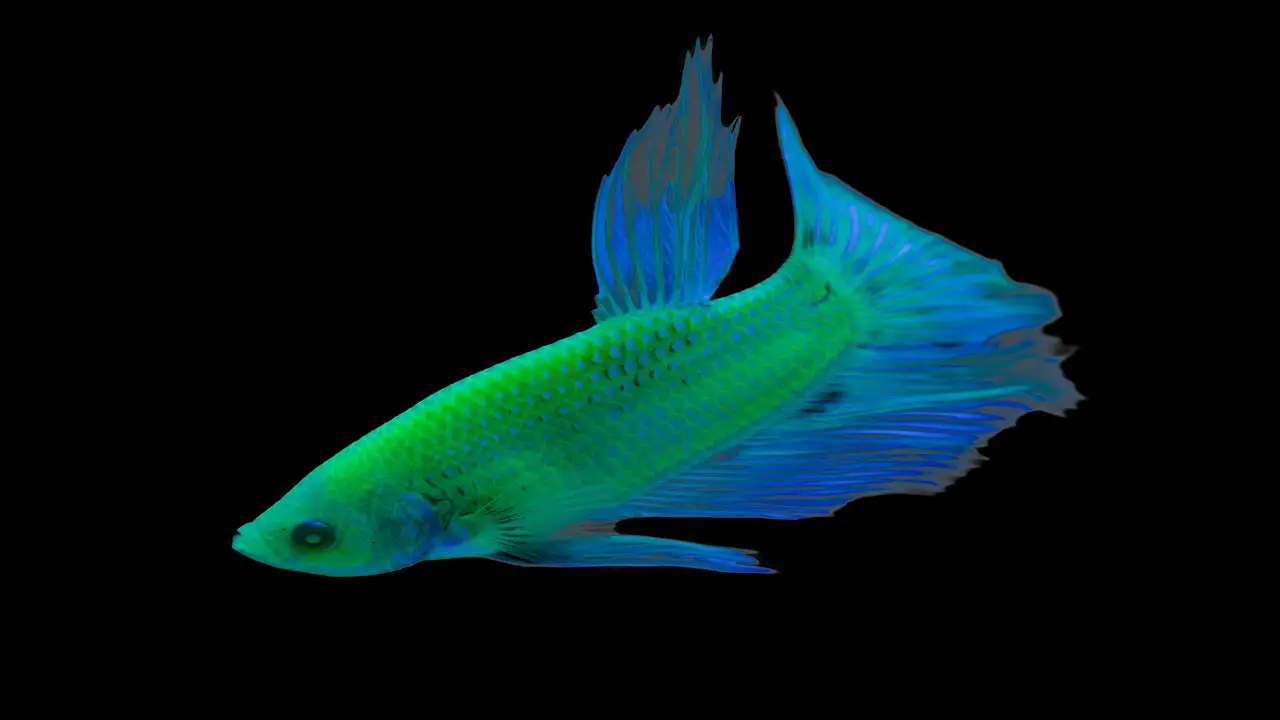
Glow in the dark Betta Fish, also known as fluorescent or neon bettas, result from genetic modification. These fish have been selectively bred to express a fluorescent protein that makes them glow under certain lighting conditions. The process involves introducing genes from other organisms, such as jellyfish or coral, into the Glow Betta Fish embryos. The resulting fish have cells that produce the fluorescent protein, giving them their unique glow.
Creating glow in the dark betta fish can be a fascinating and visually stunning project. Here are some steps to help you achieve this unique effect.
- Start with a healthy betta fish. It is important to ensure that your betta fish is in good health before attempting to create the glow-in-the-dark effect.
- Choose the right fluorescent dye. There are specific dyes available that are safe for use on betta fish and will produce the desired glowing effect.
- Prepare a suitable tank. Set up a spacious and well-maintained tank for your betta fish, ensuring that it has appropriate filtration, heating, and lighting.
- Introduce the dye gradually. Begin by adding a small amount of the fluorescent dye to the tank water. Monitor the fish closely for any signs of stress or discomfort.
- Increase or decrease dosage as needed. Depending on the desired intensity of the glow, you may need to adjust the amount of dye added to the tank.
- Regularly monitor water quality. It is important to regularly test and maintain water quality to ensure optimal conditions for your betta fish.
- Consult with experts for guidance. If you are unsure about any aspect of creating glow-in-the-dark betta fish, it is recommended to seek advice from experienced aquarium hobbyists or aquatic professionals.
How To Care Glow Betta Fish
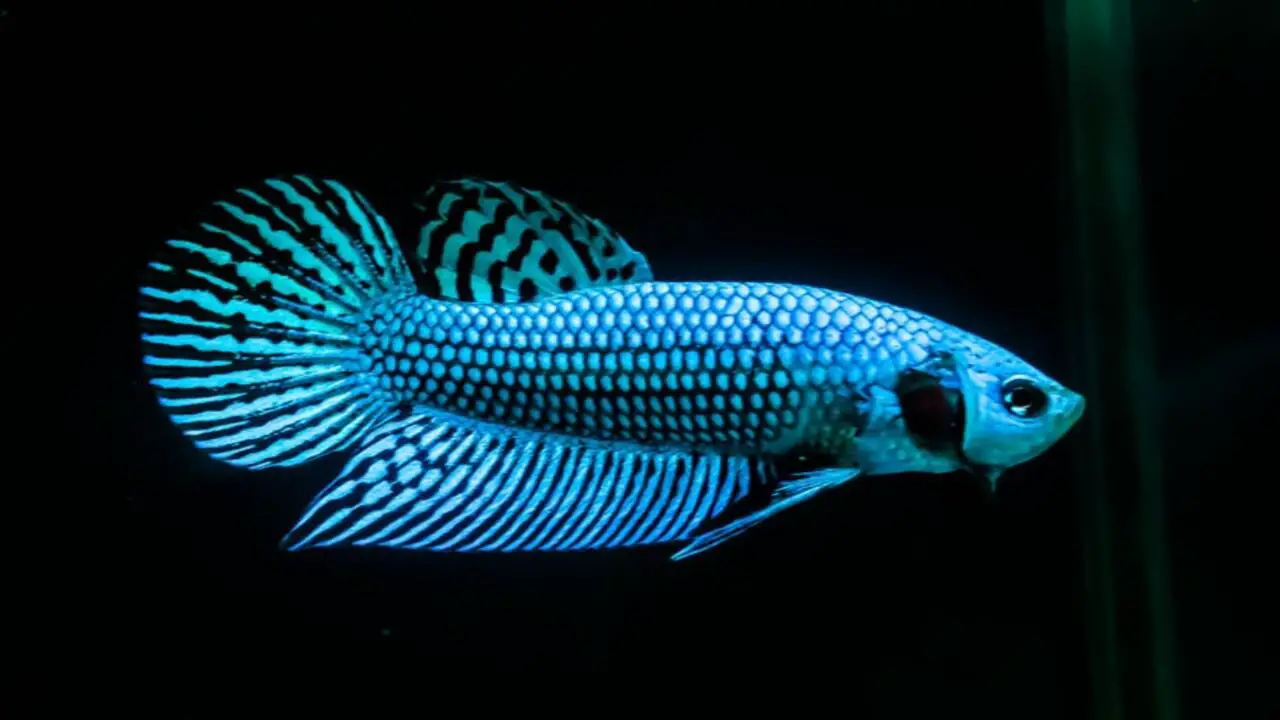
To care for Glow Betta Fish, start by providing them with a suitable tank with proper filtration, heating, and lighting. To thrive, these fish need a balanced diet of high-quality fish food, such as pellets. Additionally, it’s important to maintain proper water quality through regular water changes and testing. Avoid over-crowding the tank and provide plenty of hiding places for the fish.
When interacting with Glow Betta Fish, limit handling and be gentle. Remember, these beautiful fish have vibrant colors and unique fluorescent coloration due to their hereditary traits from jellyfish. It’s important to follow their care requirements to stay healthy and happy.
Understanding The Unique Needs Of Glow Betta Fish
Glow Betta Fish have unique needs similar to other Glow Betta Fish but with a few additional considerations. These fish require a well-maintained aquarium with plenty of hiding spots and low-light areas to make them feel secure. Providing them with a balanced diet is crucial for their overall health and enhancing their vibrant colors.
It is important to closely monitor the water quality and ensure proper filtration to create a suitable environment for these beautiful fish. Additionally, it is essential to avoid exposing them to direct sunlight or high-intensity lights to prevent overstimulation. You can ensure that your Glow Betta Fish thrives in its tank by meeting these specific care requirements.
Creating The Right Environment
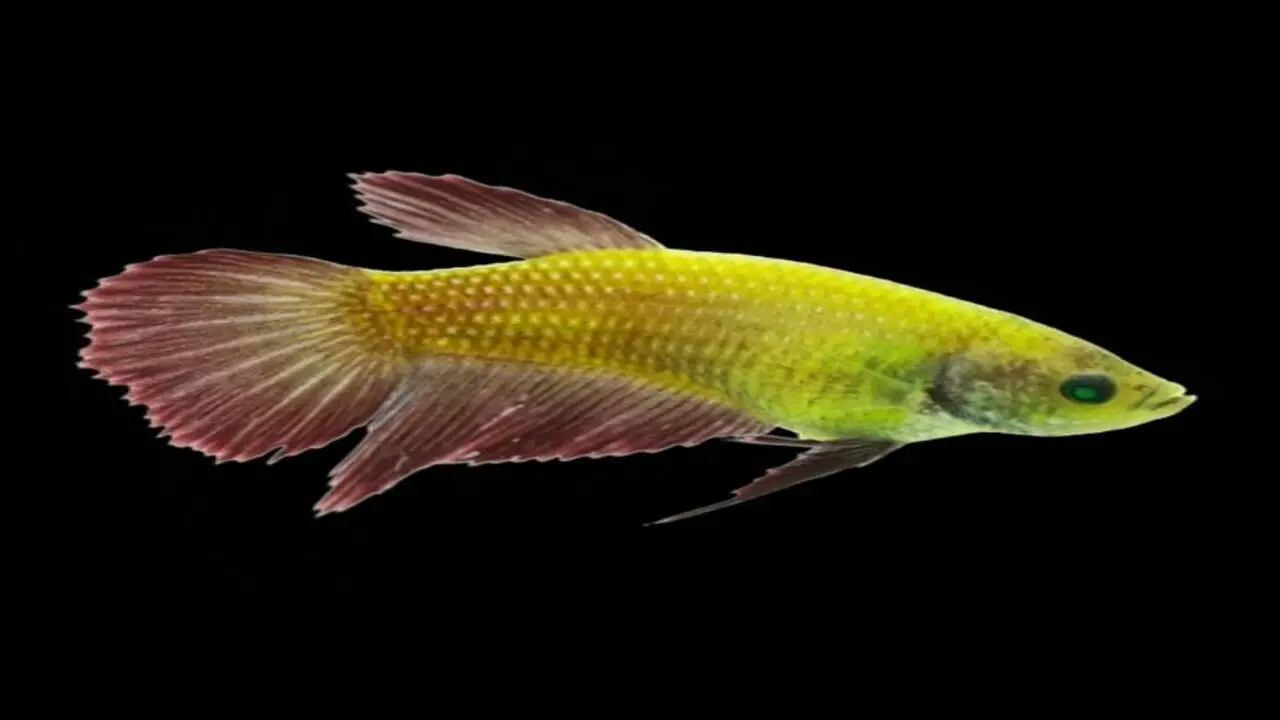
To create the ideal environment for Glow Betta Fish, providing them with a suitable tank and setup is essential. These vibrant and captivating fish require a minimum tank size of 5 gallons, equipped with a filter and heater. It’s recommended to use a dark substrate and incorporate plants into the tank to enhance the glow effect.
Avoiding bright lights is crucial, as they can disrupt the fish’s sleep cycle and overall health. Maintaining a stable water temperature and pH level is important to keep the Glow Betta Fish healthy and happy. Additionally, providing hiding places in the tank reduces stress and anxiety for the fish.
Feeding And Nutrition
Regarding feeding and nutrition requirements for Glow Betta Fish, it’s important to remember that these fascinating creatures are no different from regular bettas. Carnivores require a high-quality protein-based diet to maintain their overall health and well-being. Providing them with a varied diet, including pellets, frozen or live food, is essential for optimal nutrition.
However, avoiding overfeeding is crucial as it can lead to health issues. Monitoring their food intake and ensuring a balanced diet will keep your Glow Betta Fish healthy and enhance their vibrant colors. So, remember to feed them well and watch them thrive in their aquarium!
Monitoring Water Quality

Regular monitoring of water quality is crucial for the well-being of Glow Betta Fish, including glow-in-the-dark bettas. These stunning fish are particularly sensitive to water temperature and pH changes. Therefore, it’s important to maintain optimal conditions in their aquarium. This can be achieved through regular water changes and a reliable water testing kit.
Additionally, a well-maintained aquarium with proper filtration and heating systems ensures the best possible water quality for your Glow Betta Fish. Lastly, avoiding overfeeding your Glow Betta Fish is essential, as this can lead to excess waste and poor water quality.
Diseases And Health Concerns
Like their regular counterparts, Glow-in-the-dark bettas are prone to common Glow Betta Fish diseases such as fin rot and ich. Maintaining good water quality and a balanced diet can go a long way in preventing many health issues.
Avoiding overcrowding and ensuring proper tank conditions is important, as stress can make these fish more susceptible to illness. Quarantining new fish before introducing them to the main tank can also help prevent disease outbreaks. Regular check-ups with a knowledgeable fish veterinarian can play a crucial role in ensuring the overall health of your glow-in-the-dark betta.
Tips For Breeding Glow Betta Fish
Breeding Glow Betta Fish requires specific environmental and dietary conditions. To prepare the Glow Betta Fish for breeding, it is important to condition them with a high-protein diet and keep them in separate tanks. When setting up the breeding tanks, proper filtration and heating systems should be in place to ensure the health of the fry.
Throughout the breeding process, close monitoring is necessary, making adjustments as needed to ensure successful hatching and growth of the fry. Seek advice and guidance from experienced breeders who can provide valuable insights and tips for achieving the best possible outcome in your Glow Betta Fish breeding endeavors.
Setting Up The Perfect Aquarium For Glow Betta Fish
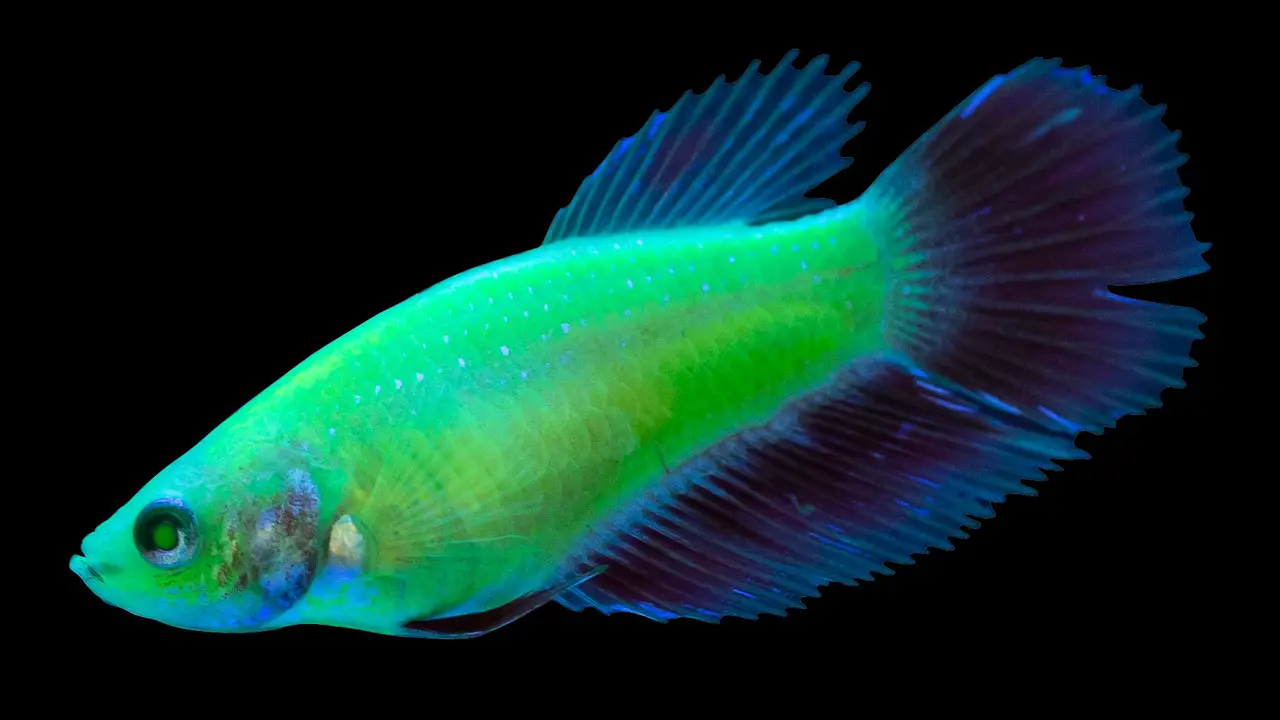
To create the perfect aquarium for Glow Betta Fish, it is important to provide a tank of at least 5 gallons with ample hiding spots and plants for them to explore. Use a gentle filter to maintain their health and well-being and keep the temperature between 76-81°F.
These Glow Betta Fish prefer low light conditions, but adding a blacklight can enhance their natural glow, showcasing their fluorescent protein. Regarding their diet, feed them high-quality betta pellets and supplement them with frozen or live foods like bloodworms. Regularly testing the water quality and performing partial water changes are essential to create a healthy environment for these beautiful fish.
The Pros And Cons Of Owning A Glow Betta Fish
Owning a glow betta fish can be an exciting and unique experience, but it’s important to consider the pros and cons before deciding. Here are some of the pros and cons of owning a glow betta fish:
Pros:
- Aesthetically pleasing: The vibrant colors and glowing properties of glow betta fish can be visually stunning and make a beautiful addition to any aquarium.
- Conversation starter: Owning a glow betta fish can spark interesting conversations with friends and family, as they are not commonly seen in the pet trade.
- Low maintenance: Betta fish are generally low-maintenance pets, requiring minimal space and equipment compared to other types of aquarium fish.
Cons:
- Ethical concerns: Some people are concerned about the genetic modification that creates glow betta fish. It’s important to research and understand the breeding practices involved before deciding.
- Health risks: There is limited scientific research on the long-term health effects of genetically modified fish. It’s possible that these modifications could affect their overall health and well-being.
- Limited availability: Glow betta fish may not be readily available in all areas, so finding a reputable breeder or supplier may require additional effort.
Ultimately, the decision to own a glow betta fish should be based on personal preferences, ethical considerations, and the ability to care for these unique pets properly.
How Do You Set Up A Glofish Aquarium?
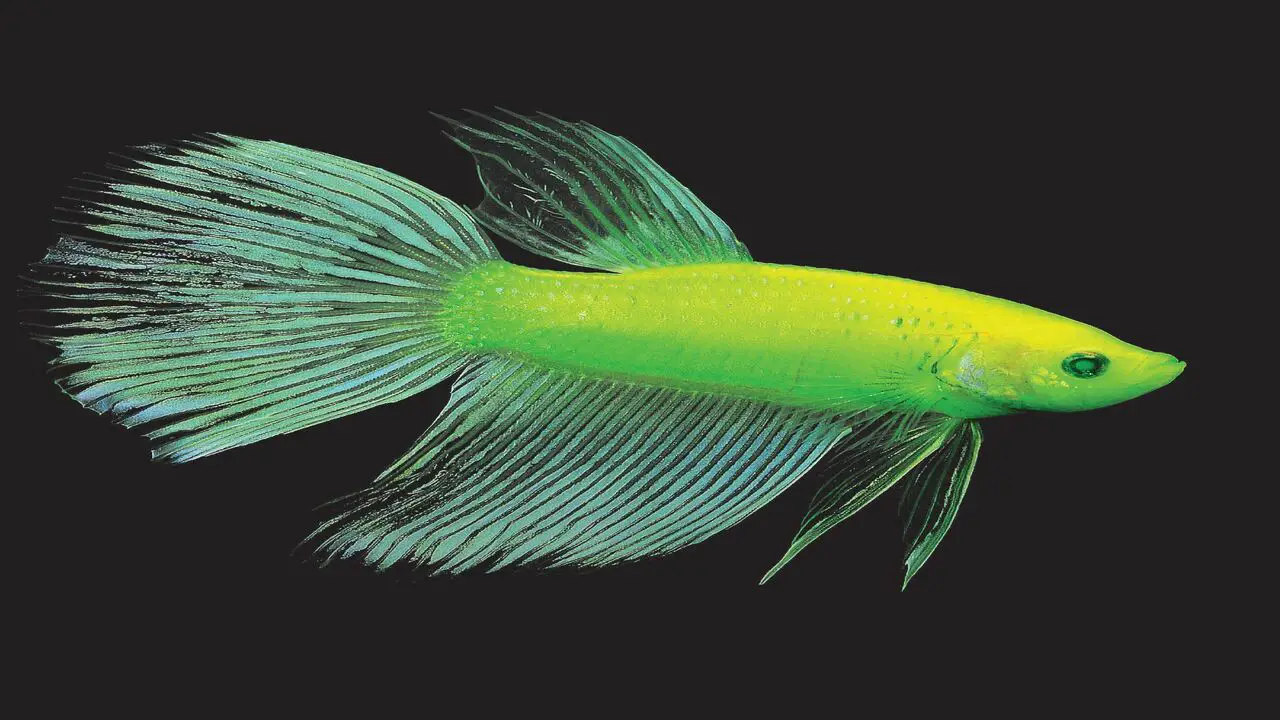
When setting up a GloFish aquarium, the first step is to select an appropriate tank size based on the number of fish you intend to keep. Installing a filtration system and cycling the water before adding any fish is crucial. To enhance the fluorescent colors of the GloFish, add non-toxic plants, ornaments, and gravel to your tank. Use specialized LED lights that emit blue light for optimal coloration.
Also, monitoring the water quality regularly and conducting regular water changes is essential to maintain a healthy environment for your fish. GloFish is sensitive to water temperature fluctuations, so ensure you keep the temperature within the recommended range. With proper care, your GloFish aquarium can be a vibrant and stunning addition to your home or office space.
Conclusion
Owning a glow in the dark Betta Fish can be a unique and fascinating experience for any aquarium enthusiast. However, it’s important to understand and meet the specific care needs of these special fish. From creating the right environment to monitoring water quality and providing proper nutrition, caring for Glow Betta Fish requires dedication and knowledge.
Additionally, it’s essential to consider the pros and cons of owning these fish and ensure you are prepared to provide the necessary care for their unique needs. Glow Betta Fish can be a stunning addition to any aquarium with the right setup and care.
Frequently Asked Questions
How Long Do Glofish Bettas Live?
GloFish bettas typically have a lifespan of 2-3 years, similar to regular bettas. Their lifespan can be extended with proper care, including a balanced diet and good water quality. Regular veterinary check-ups are also important for identifying and treating any health issues.
Is There A Glofish Betta?
Yes, there is a variation of Glow Betta Fish known as the GloFish Betta. These fish have been genetically modified to glow under black light. The fluorescent proteins used in their modification are derived from jellyfish and sea anemones.
How Big Do Glow Betta Fish Get?
Glow Betta Fish typically grow to 2.5-3 inches, similar to other Glow Betta Fish. Their size can vary depending on genetics and care conditions. A larger tank, good water quality, and a proper diet can promote healthy growth.
What Is Glow Betta Fish?
Glow Betta Fish are genetically modified fish bred to have fluorescent properties. They appear brightly colored under regular lighting and glow in the dark under UV light. Some people find these fish fascinating as pets.
Are Glow Betta Fish Legal?
Glow Betta Fish legality varies by country and region due to different laws on genetically modified organisms. Researching local regulations is crucial before purchasing or importing these unique fish.

Aquarium passion is all about connecting with the aquatic life and providing education to the public on the importance of these creatures. We showcase a wide variety of marine life through our exhibits as well as working with schools to provide unique learning opportunities for students of all ages.


